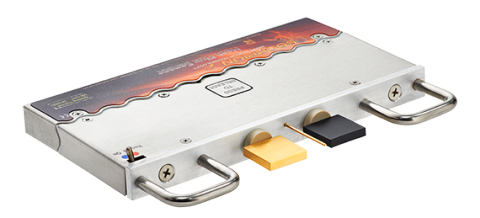When it comes to determining the performance of industrial bakery ovens, it all comes down to data. Thermal profiling with smart sensors from Reading Thermal will take the guesswork out of oven control and provide you with added safety and quality control measures.
Reading Thermal, a Reading Bakery Systems brand, has focused on measuring and understanding the commercial baking process for more than 25 years. We manufacture and support the SCORPION® 2 Data Logger which enables you to monitor actual in-process oven conditions and get the critical information you need to correct problems and maintain optimum process control.
Connecting smart sensors and sensor arrays to the SCORPION® 2 Data Logger and passing them through the oven with the product, enables the measurement system to measure and map the four main baking parameters: heat flux, temperature, humidity and air velocity.
Why Thermal Profiling is Important
The characteristics of baked goods are defined by the amount and type of heat applied to them during the baking process, and each oven bakes differently than another. Analyzing and controlling the differences are critical to understanding how your finished products will be affected. The benefits include:
- Improved product quality
- Increased productivity
- Lower energy costs
- Efficient development of new processes
- Quick troubleshooting
What Our Profiling System Can Measure
Connecting smart sensors and sensor arrays to the SCORPION® 2 Data Logger and passing them through the oven with the product, enables the measurement system to capture the four main baking parameters:
Heat Flux
Oven heat flux is the best indicator of oven performance during baking in terms of the product. Many bakers use oven heat flux profiles when attempting to produce the same product on two different lines. The two lines will produce the same consistent product when the heat flux profiles match. The SCORPION® 2 Heat Flux Sensor is designed to measure convective and radiant heat fluxes at product level and display the results in Btu/hr·ft2 or W/m2.
Temperature
Oven temperature affects oven-spring, drying/dehydration, and color formation during baking. Insufficient or excessive temperature can also lead to undesirable changes in texture and taste. The Scorpion® 2 Temperature Sensor Array is designed to measure temperature at product level, in fixed positions across the conveyor, and delivers a precise picture of temperatures from side-to-side and end-to-end.
Humidity
Products passing through a thermal process interact with the moisture in the environment. The moisture often comes from the product itself and represents a delicate balance that affects finished product quality in many ways. Bakeries all over the world rely on the SCORPION® 2 Humidity Sensor, which measures the absolute moisture content of the thermal environment in both heating and cooling processes.
Air Velocity
In a radiant oven, the airflow comes from the moving conveyor, the exhaust system, and natural combustion air currents. In a convection oven, the airflow comes primarily from the air distribution plenums. Measuring the oven air velocity with the SCORPION® 2 Air Velocity Sensor will help you spot airflow differences between baking zones and unwanted air currents at the entrance or exit of the oven that result in inconsistent baking.
If you are interested in thermal profiling for your industrial bakery ovens, look no further than the state-of-the-art Reading Thermal SCORPION® 2 Profiling System and our different sensors and sensor arrays. Call our headquarters in Sinking Spring, Pennsylvania at (610) 678-5890 Ext. 2, or contact us online to learn more about our innovative products.

